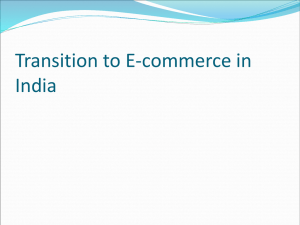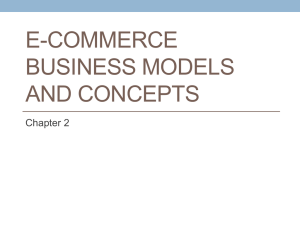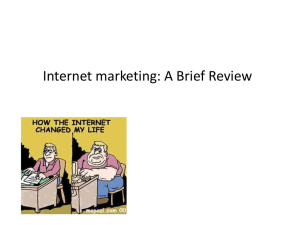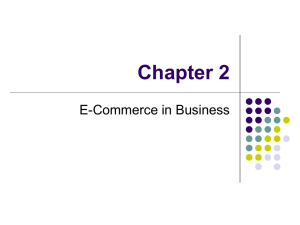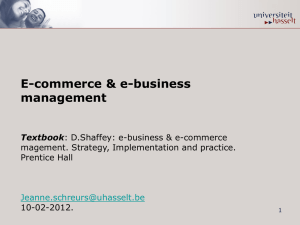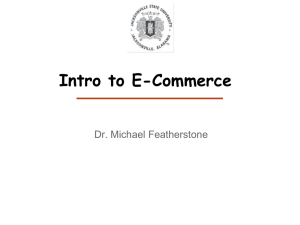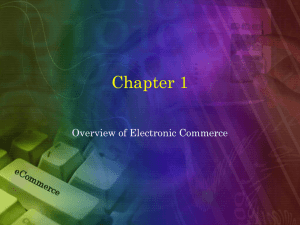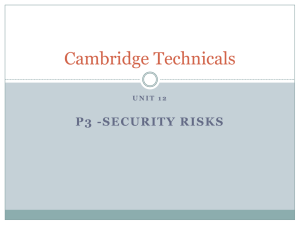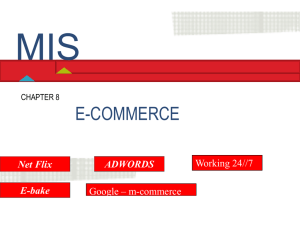Flat World - Ali`s ICT educational resource site
advertisement
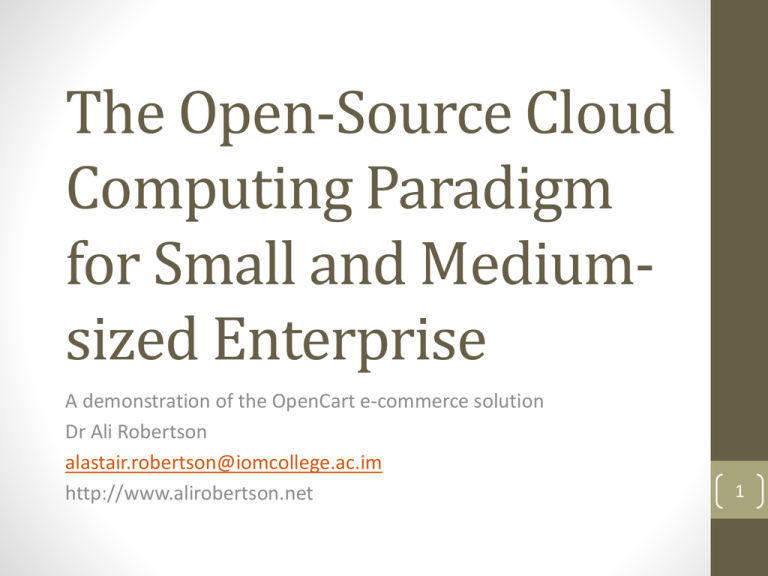
The Open-Source Cloud Computing Paradigm for Small and Mediumsized Enterprise A demonstration of the OpenCart e-commerce solution Dr Ali Robertson alastair.robertson@iomcollege.ac.im http://www.alirobertson.net 1 The world is flat… 2 http://kirstenlorenzen.wordpress.com/2013/01/22/globalization-the-world-is-flat/ And it just become flatter… • Smaller organisations typically struggle to engage with IT effectively. • Many reasons, as will be discussed. • Just because you are a good entrepreneur, doesn’t mean you can embrace high-end computing – right? • This presentation introduces the idea that technologies that have become the mainstay of larger corporations are now available to smaller enterprises. • And they are free, well, almost… 3 Why is our understanding of the small business technology market important? • DTI (2005): Small and Medium Sized Enterprises (SMEs) account for 60% of GDP and 58% of employment. • 4.3 million businesses the UK exist, large and small. • 99% of these are SMEs! • Implies that if SMEs apply ICT more effectively, it would have a significant and positive impact on the economy. 4 http://ec.europa.eu/enterprise/policies/sme/facts-figures-analysis/sme-definition/index_en.htm The make-up of a typical SME entrepreneur • • • • • Busy Multi-tasker Experienced in their role Good business acumen Typical age – 40 to 50 • Outcome of a UK NW region survey (2006/7): • See https://alirobertson.net/research-fora/ • Director/owners of enterprise have a LOW psychological propensity to adopt technologies generally • Approximately 50% self-categorize as: • • • • Not enjoying using technology Not finding technology easy to use YET Many of the low propensity IT adopters look at technology as useful! 5 Comparing people who run businesses large and small… • Group question: What is the difference between a large business entrepreneur and a small business entrepreneur if they BOTH dislike technology? • Larger businesses have financial resources smaller organisations do not have. • The large business entrepreneur can afford experienced IT staff who can make electronic ‘stuff’ happen as needed. • And this is why smaller enterprises tend to significantly lag larger enterprises in terms of innovation adoption. • IT consultants are very expensive, often unable to work out requirements/needs of businesses successfully. 6 Open-source software paradigm • Open-source (OS) software promotes the creation of software tools that are free to download and use. • Community driven development. • No ownership of code that creates the software. • Moodle is an example of OS technology. • About 85% of HEIs in UK use Moodle in some form. • Alirobertson.net is built using the WordPress OS framework. • OS has now moved into the business domain in many forms. • E-commerce, CRM, Project Management etc. • Very recently (within 3 years), OS community has driven the creation of e-commerce ‘models’ which enable fast creation of complex e-commerce sites. • Relatively Simple to use. • Cheap to run. • Automates many of the business processes that were once paper driven. • e.g. payment systems, customer intelligence systems, order/stock management, customer interaction (e.g. reviews, automated email systems). 7 Let’s look at what this world looks like ‘live’ • For this demonstration I will use a website hosting company called GoDaddy. • Provides various website creation/hosting services for about £200 per year. • Includes a multitude of free-to-use and install OS packages. • I will now show you that it takes about 15 minutes to choose, install and test a new e-commerce website. • Assumes that the business already has a web presence. • Relatively easy to do? • Shows that the past complexity of developing an e-commerce solution has disappeared, well almost! 8 So, what could possibly go wrong? • On the face it, the process to set up a site has been greatly simplified. • Some issues entrepreneurs must address: • Version upgrades must be handled with caution. • Recent move from OpenCart 1.5 to 2.0 highlights the problem • The entrepreneur must learn to take care of the newly found data. • Regular ‘safe’ backups – not a pen drive! • Customer data must be protected. • Open-source communities move and change. • Need some assurance that the e-commerce site can ‘move’ into another e-commerce framework. 9



